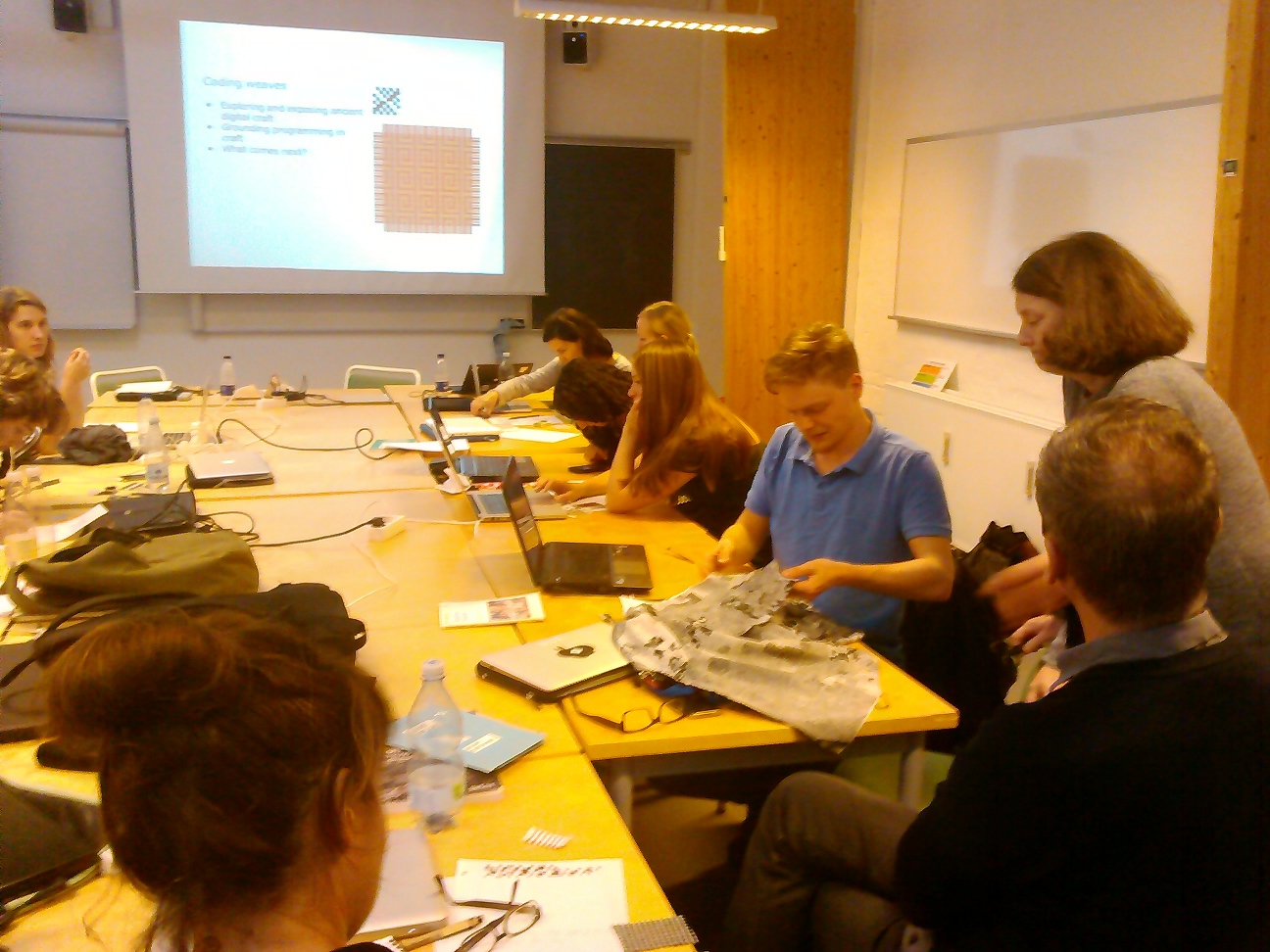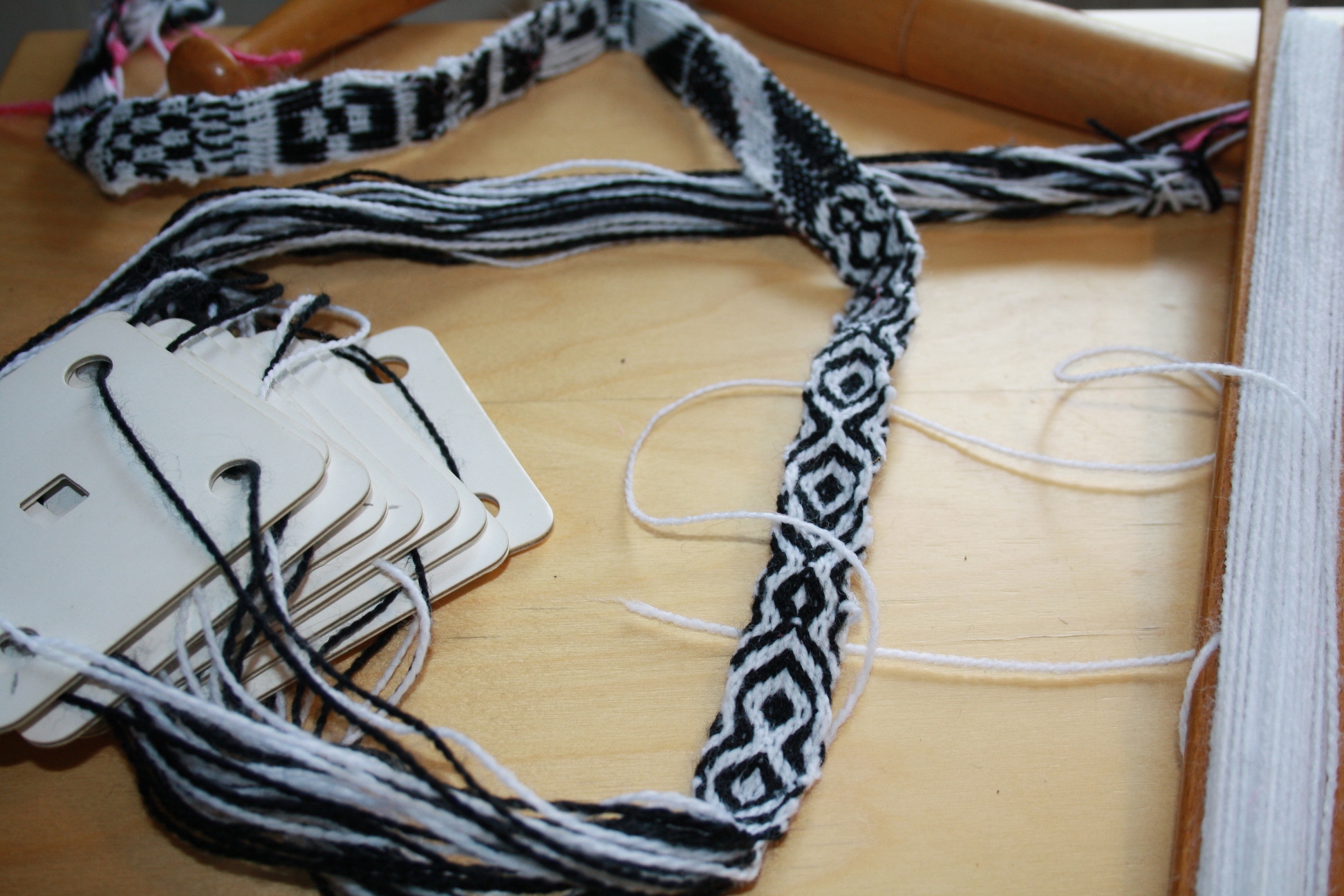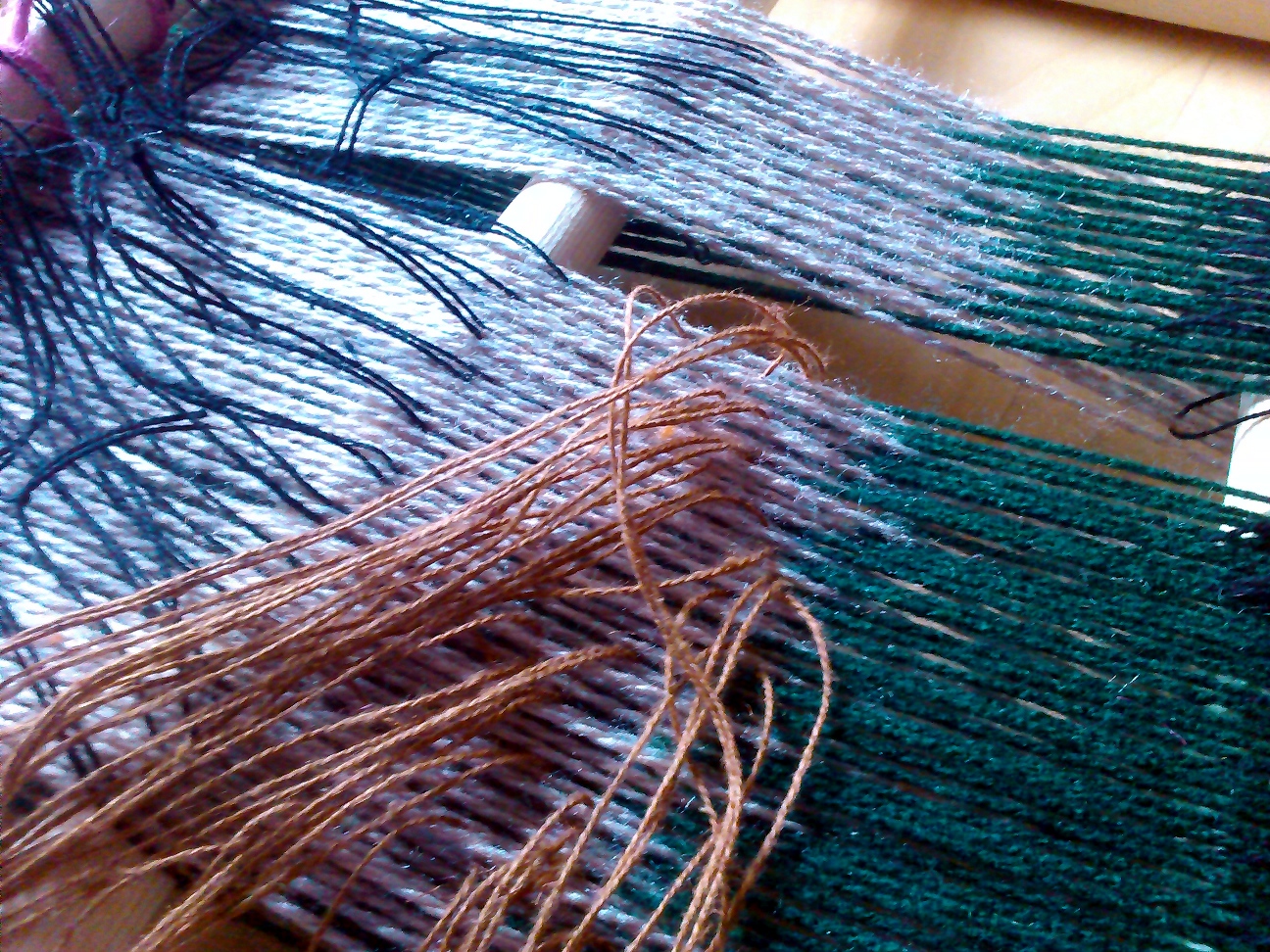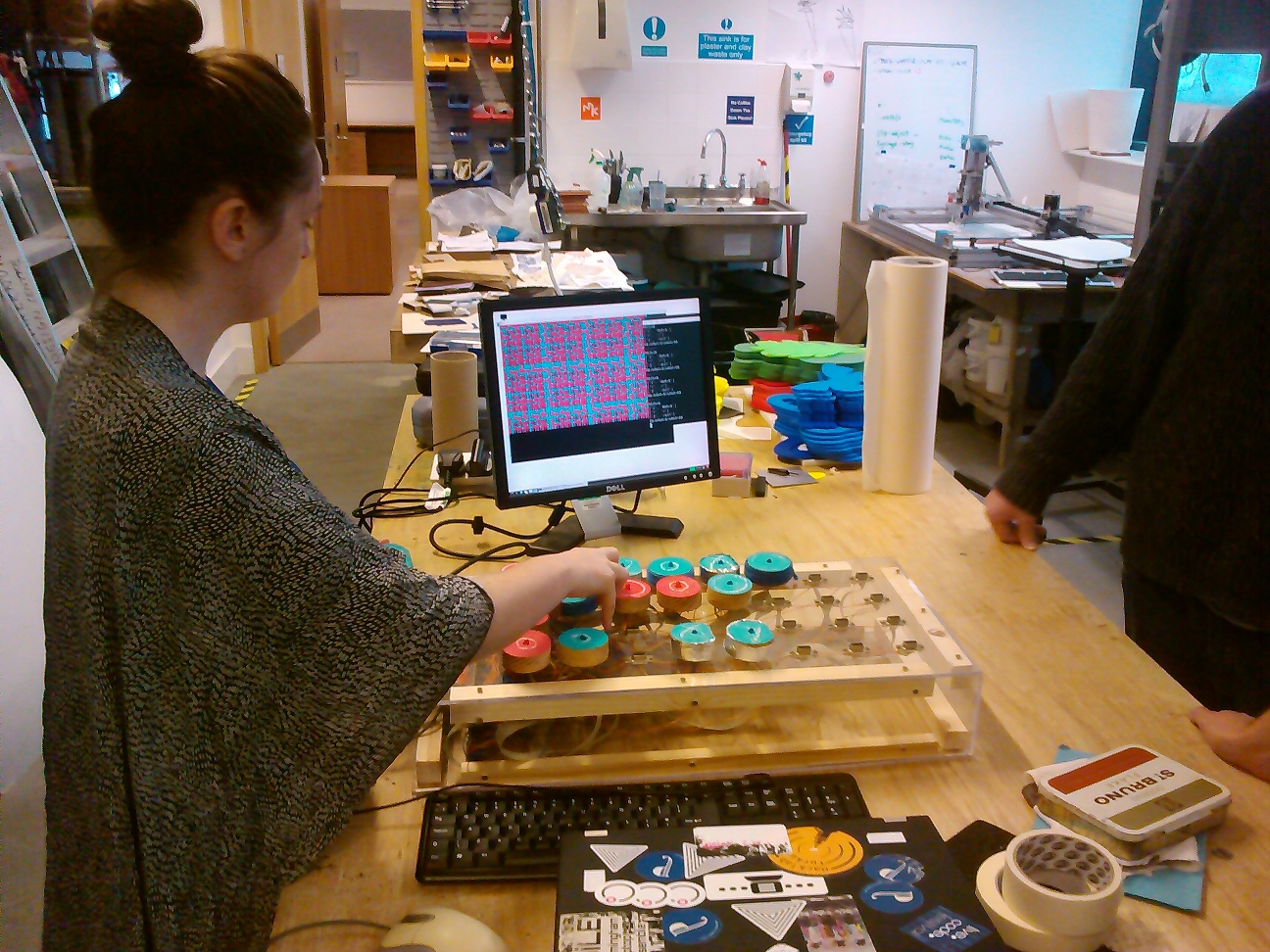One of the most inspiring things we heard from Leslie Downs (our Advisor on textile innovation) was about the way he manufactures high specification structures for aerospace engineering by weaving on ordinary looms, sometime even hand looms for their flexibility. It turns out that some of these techniques are also possible with tablet weaving: I came across this mysterious diagram in ‘Byways in Handweaving’ by Mary Meigs Atwater:
Author: Dave Griffiths
Test pattern rendered in threads
A language for Tablet weaving
After the tablet weaving experiment, here is an attempt at a language/notation for understanding it better. You can have a go here.
Lets start simple:
(weave-forward 16)
Coding with threads: Tablet loom
Tablet weaving is an ancient form of pattern production using cards which are rotated to provide different sheds between warp threads. It’s used to produce long strips of fabric, or the starting bands and borders that form part of a larger warp weighted weaving. We’ll come to the second use later in the weaving codes project.
There are quite a few programs around to simulate the tablet weaving process – I used this program to get an initial understanding, here’s an example screenshot:
Coding with threads: Frame loom
After writing the 4 shaft loom simulation the next job was to try weaving the structures with real threads. Would I be able to replicate the predicted patterns and structures? Ellen warned me that the meander weave would result in unstable fabric, but it would depend on the nature of the material used so was worth trying. Originally I planned to warp up the Harris loom but I need to work up to that as it’s a big and complex job, so I quickly built a frame loom with some bits of wood and nails at 5mm intervals to hold the warp in place.
Here you can see it set up with the all important first ‘shed’ (name given to the gap between subsets of warp theads), which defines the order of the threads. I packed the warp too tightly and messily so this was important – luckily as the yarn colours alternate so it made it easy to make.
Dyadic device: a 4 shaft loom simulation.
On the train back from the Sheffield codingweaves workshops back in October I wrote a quick browser program to attempt to further understand the relationship between structure and pattern in weaving – which I’ve put online here. This works in the inverse of how we’ve been writing weaving simulation programs so far. Instead of defining the pattern you want directly, you are describing the set up of a 4 shaft loom – so the warp threads that each of 4 shafts pick up in the top row of toggle boxes, then which shafts are picked up for each weft thread as the fabric is woven on the right.
This involved writing a program that is based closely on how a loom functions – for example calculating a shed (the gap between ordered warp thread) by folding over each shaft in turn and or-ing each warp thread to calculate which ones are picked up. This really turns out to be the core of the algorithm – here’s a snippet:
;; 'or's two lists together: ;; (list-or (list 0 1 1 0) (list 0 0 1 1)) => ;; (list 0 1 1 1) (define (list-or a b) (map2 (lambda (a b) (if (or (not (zero? a)) (not (zero? b))) 1 0)) a b)) ;; calculate the shed, given a lift plan ;; position counter. ;; shed is 0/1 for each warp thread: up/down (define (loom-shed l lift-counter) (foldl (lambda (a b) (list-or a b)) (build-list (length (car (loom-heddles l))) (lambda (a) 0)) (loom-heddles-raised l lift-counter)))
I’ve become quite obsessed with this program, spending quite a lot of time with it trying to understand how the loom setup corresponds to the patterns. Here are some example weaves that you can try. Colour wise, in all these examples the order is fixed – both the warp and the weft alternate light/dark yarns.
This is tabby or plain weave – the simplest and strongest weave (used for sails and hard wearing fabric). The striped pattern is a result of this alternating colour order.
Tangible weavecoding at the Makernow Fablab
Demoing the flotsam tangible livecoding device at the Makernow Fablab in Penryn. Future revisions of the hardware will need to fix some of the problems identified in testing as well as work in gallery exhibitions we have planned for next year.
Weaving notations
Learning about thinking and weaving in Leeds and Sheffield
The second week of intense work on weavingcodes/codingweaves took place in the north of England, and began with a talk at the New Mechanics Institute show and tell meeting in Leeds. This was a good place to pick up from the previous week in Denmark as it included a talk on pixel art from the early days to contemporary forms that had many similarities with our slides.
Continue reading Learning about thinking and weaving in Leeds and Sheffield
Learning to read, notate and compute textiles in Aarhus
Setting off from Copenhagen, the weaving codes tour continued as Emma Cocker, Alex McLean, Ellen Harlizius-Klück and I sped across the Danish countryside on the train. We were heading for Aarhus to spend some time working with people at the other end of the technology spectrum – The Center for Participatory IT in Aarhus University.
We were invited by Geoff Cox to run a workshop over two days, and given the nature of the faculty and time working together being at a premium on this project, we decided to to run the workshop more as invitation to join in our work (and therefore learn a bit about how artistic research is done), rather than having specific material to cover.

 Continue reading Learning to read, notate and compute textiles in Aarhus
Continue reading Learning to read, notate and compute textiles in Aarhus












